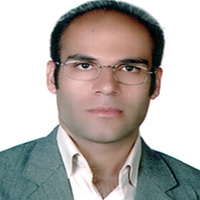The effect of different barley (Hordeum vulgare) and fenugreek (Trigonella foenum- graecum) intercropping planting ratio under nitrogen fertilizer on dry matter quality and quantity
Author(s):
Article Type:
Research/Original Article (دارای رتبه معتبر)
Abstract:
Background And Objectives
Intercropping is the planting of more than one plant in one land and growing season so that the plants should be the highest intimacy together in most growing season. Usually, the component species in intercropping systems occupy different niches and thereby enhance the utilization of resources. Consequently, intercropping improves the yields of the component crops. The intercropping of a cereal with a legume is a preferred system for achieving increased food supply and reduced environmental feedback. So that, one of the way to achieving to sustainability in agriculture is multiple and intercropping system.Material and
Methods
In order to study the competition ability of barley (Hordeum vulgare) and fenugreek (Trigonella foenum- graecum) intercropping under nitrogen fertilizer in barley stemming stage a field experiment was conducted in experimental farm of Agricultural Faculty of Shahid Chamran University of Ahvaz at 2015-2016 growing season. Experimental design was randomized complete block as a factorial arrangement with three replications. The first factor was 8 planting patterns includes barley sole cropping, fenugreek sole cropping, fenugreek-barley intercropping ratios includes 2:1, 2:2, 3:1, 1:3, as replacement series, 100% barley% fenugreek as additive series and mixed intercropping. The second factor was two nitrogen fertilizer application includes control (no nitrogen fertilizer) and 40 kg/ha nitrogen fertilizer. Grain yield was determined by harvesting a 2 m2 area from each plot. The measured traits includes: crude protein (CP), water soluble carbohydrate(WSC), ash percent, dry matter digestible(DMD), acid detergent fiber(ADF), Neutral detergent fiber(NDF), Intercropping dry matter yield, barley relative yield, fenugreek relative yield, and land equivalent ratio(LER). The plant density for barley was 375 plant/m2 and Zehak cultivar been used. The plant density for barley was 50 plant/m2 and endemic cultivar been used. The harvest operation achieved at April in barley dough stage.Results And Discussions
The results of showed the highest total dry matter (1277.1 gr/m2) and LER (1.15) was obtained at 100%barley% fenugreek additive method. The highest crude protein, dry mater digestible (DMD) and ash percent were observed at fenugreek sole cropping treatment. The highest water soluble carbohydrate, NDF and fiber were found at barley sole cropping. Among treatments, 1:3 barley-fenugreek had the highest crude protein. Also the nitrogen fertilizer increased crude protein, water soluble carbohydrate and dry matter digestible compared to control. But in ADF and NDF treatment, the control treatment had highest value compared to nitrogen fertilizer.Conclusion
Totally the application of nitrogen fertilizer had significant effect on qualitative traits and with application of nitrogen fertilizer, barley crude protein, water soluble carbohydrate and dry matter digestible increased. Also, the fenugreek had the highest protein, DMD and Ash compared to barleyKeywords:
Language:
Persian
Published:
Electronic Journal of Crop Production, Volume:11 Issue: 1, 2018
Pages:
23 to 35
magiran.com/p1860581
دانلود و مطالعه متن این مقاله با یکی از روشهای زیر امکان پذیر است:
اشتراک شخصی
با عضویت و پرداخت آنلاین حق اشتراک یکساله به مبلغ 1,390,000ريال میتوانید 70 عنوان مطلب دانلود کنید!
اشتراک سازمانی
به کتابخانه دانشگاه یا محل کار خود پیشنهاد کنید تا اشتراک سازمانی این پایگاه را برای دسترسی نامحدود همه کاربران به متن مطالب تهیه نمایند!
توجه!
- حق عضویت دریافتی صرف حمایت از نشریات عضو و نگهداری، تکمیل و توسعه مگیران میشود.
- پرداخت حق اشتراک و دانلود مقالات اجازه بازنشر آن در سایر رسانههای چاپی و دیجیتال را به کاربر نمیدهد.
In order to view content subscription is required
Personal subscription
Subscribe magiran.com for 70 € euros via PayPal and download 70 articles during a year.
Organization subscription
Please contact us to subscribe your university or library for unlimited access!


